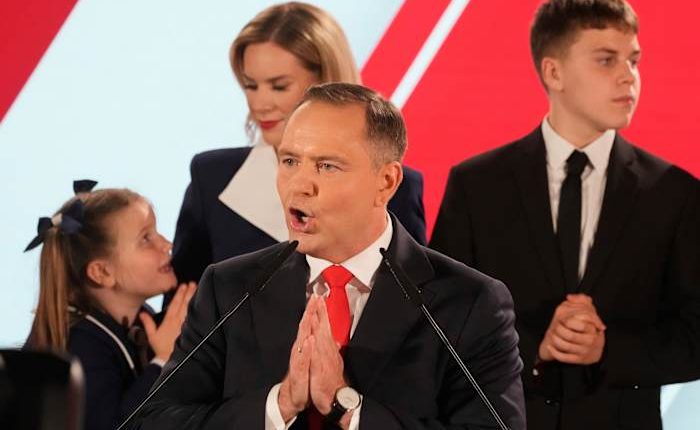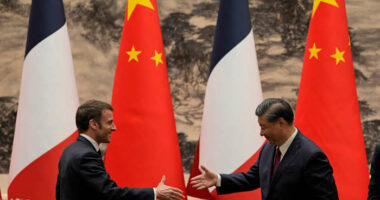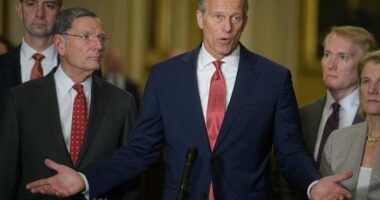Share this @internewscast.com

WARSAW – In Poland’s recent presidential runoff election held over the weekend, conservative Karol Nawrocki emerged victorious based on the final tally released on Monday. Nawrocki garnered 50.89% of the votes in a closely contested race against the liberal Mayor of Warsaw, Rafał Trzaskowski, who secured 49.11%.
The tight competition kept the nation in suspense following a preliminary round two weeks earlier, maintaining the tension through Monday night. This election highlighted significant divisions within the country, strategically positioned on the eastern edge of both NATO and the European Union.
Initially, an exit poll released on Sunday evening indicated a potential win for Trzaskowski, but as the night progressed and more data became available, the situation shifted in favor of Nawrocki.
The outcome indicates that Poland can be expected to take a more nationalist path under its new leader, who was backed by U.S. President Donald Trump.
The role of a president in Poland
Most day-to-day power in the Polish political system rests with a prime minister chosen by the parliament. However, the president’s role is not merely ceremonial. The office holds the power to influence foreign policy and to veto legislation.
Nawrocki will succeed Andrzej Duda, a conservative whose second and final term ends on Aug. 6.
A headache for Tusk
Prime Minister Donald Tusk came to power in late 2023 at the end of a coalition government that spans a broad ideological divide — so broad that it hasn’t been able to fulfill certain of Tusk’s electoral promises, such as loosening the restrictive abortion law.
But Duda’s veto power has been another obstacle. It has prevented Tusk from fulfilling promises to reverse laws that politicized the court system in a way that the European Union declared to be undemocratic.
Now it appears Tusk will have no way to fulfill those promises, which he had made both to voters and to the EU.
A former boxer, historian and political novice
Nawrocki, a 42-year-old historian, was tapped by the Law and Justice party as part of its push for a fresh start.
The party governed Poland from 2015 to 2023, when it lost power to a centrist coalition led by Tusk. Some political observers predicted the party would never make a comeback, and Nawrocki was chosen as a new face who would not be burned by the scandals of the party’s eight years of rule.
Nawrocki has most recently been the head of the Institute of National Remembrance, which embraces nationalist historical narratives. He led efforts to topple monuments to the Soviet Red Army in Poland, and Russia responded by putting him on a wanted list, according to Polish media reports.
Nawrocki’s supporters describe him as the embodiment of traditional, patriotic values. Those who oppose secular trends, including LGBTQ+ visibility, have embraced him, viewing him as a reflection of the traditional values they grew up with.
The Trump factor
Trump made it clear he wanted Nawrocki as Poland’s president.
The conservative group CPAC held its first meeting in Poland last week to give Nawrocki a boost. Kristi Noem, the U.S. Homeland Security Secretary and a prominent Trump ally, strongly praised Nawrocki and urged Poles to vote for him.
The U.S. has about 10,000 troops stationed in Poland and Noem suggested that military ties could deepen with Nawrocki as president.
A common refrain from Nawrocki’s supporters is that he will restore “normality,” as they believe Trump has done. U.S. flags often appeared at Nawrocki’s rallies, and his supporters believed that he offered a better chance for good ties with the Trump administration.
Copyright 2025 The Associated Press. All rights reserved. This material may not be published, broadcast, rewritten or redistributed without permission.














